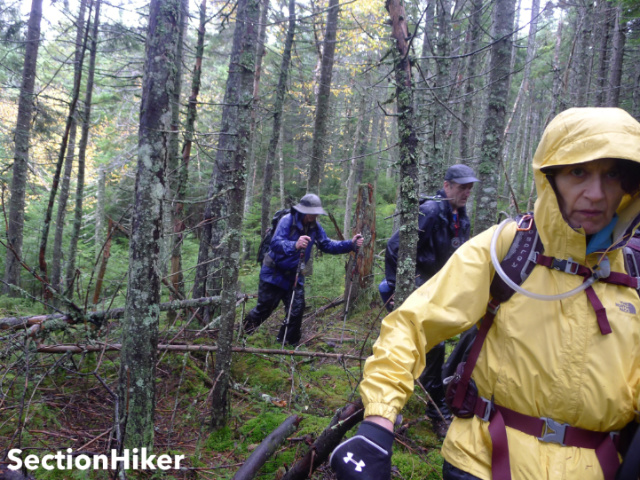Thermoregulation is a fancy word for an essential hiking and backpacking skill, namely keeping a healthy body temperature even when the surrounding temperature is too cold or too hot. It goes hand-in-hand with layering your clothes to maintain a comfortable body temperature that avoids hypothermia in cold and/or wet weather or heat exhaustion when it’s hot and/or very humid.
One of the biggest thermoregulation challenges hikers and backpackers face is thermoregulation in cold, sustained rain, below about 50-60 degrees Fahrenheit. This is the temperature range when the occurrence of condensation and perspiration inside a rain jacket can make you uncomfortably chilled and potentially lead to hypothermia.
Put simply, moisture on your skin is 25 times more efficient at cooling you than air, which is why sweating is so effective for cooling you in hot weather. But when the outside temperature is much colder than your core temperature (98.6F), excessive cooling will make you feel chilled. But rain is often unavoidable, so it’s important to understand how to mitigate its chilling effect when temperatures dip.
Why do you get wet inside a rain jacket?
All rain jackets suffer from internal condensation when the interior is warmer than the exterior when it’s raining because they trap your body heat. That temperature differential is what causes condensation, just like in a single-wall tent. When I say “all rain jackets,” this includes waterproof/breathable rain jackets, which can only vent water vapor in a gaseous form before it condenses to a liquid. While waterproof/breathable jackets can help vent moisture from perspiration in its gaseous state, they’re unable to vent it after it’s turned into a liquid.
The Role of a Midlayer Garment
If all of the garments you wear inside a rain jacket get soaking wet and the interior of the rain jacket is wet, the moisture will be very efficient at conducting body heat away from your core. It’d be a lot like being immersed in a vat of cold water.
That’s where a good midlayer garment can save your bacon. What you want is a midlayer pullover, hoodie, or jacket that resists saturation, usually by wicking moisture to its outer layers, while trapping your body heat in air pockets to keep you warm. If you can break that pipeline of moisture conducting heat away from your body, you’ll interrupt the flow of warmth away from your skin.

Polyester Fleece Midlayer
The solution is to wear a midlayer between your shirt and rain jacket that blocks the transfer of body heat to your rain jacket. A polyester fleece pullover or polyester fleece jacket is the best type of garment for this because it is naturally wicking, pulling moisture from your base layers away from your skin while maintaining an envelope of warm air around your core. Polyester fleece is also better than wool because it absorbs less water (it’s plastic after all) and dries much, much faster.
Polyester fleece is also fairly inexpensive, very durable, and available in different weights so you can dial in the amount of warmth you need for different times of year or climates. Many manufacturers also make recycled fleece pullovers, hoodies, or jackets to mitigate the environmental effects of creating new fleece material.
Recommended Fleece Types
The best fleece midlayers are fairly dense exteriors with lots of small air pockets and good venting. I’d avoid fleece that is windproof, thick pile, or too porous and thin, like Polartec Alpha. What you want are 100-weight or 200-weight fleece tops equivalent to R1 and R2 from Patagonia or TKA100 and TKA200 from The North Face.
Here are some suggested fleece garments to try:
Down and Synthetic Jackets as Midlayers
What about using a down jacket or a synthetic insulated jacket as a midlayer? While these jackets are more popular than lightweight fleece pullovers or jackets, they’re usually too warm to use as a midlayer garment and are best held in reserve to change into when you stop hiking and want to put on drier and warmer clothes. They also absorb a lot of moisture, even if their insulation has been treated with a waterproofing agent, and take much longer to dry than fleece unless you have a clothes dryer handy.
Wrap Up
For three-season as well as winter hiking, most hikers will find a simple lightweight or midweight fleece to be effective as a midlayer under a rain jacket when hiking in the rain. A fleece vest, quarter-zip or half-zip pullover, or full-zip fleece jacket are all good because they provide venting if you feel too warm. A hood can also be useful.
SectionHiker is reader-supported. We only make money if you purchase a product through our affiliate links. Help us continue to test and write unsponsored and independent gear reviews, beginner FAQs, and free hiking guides.
